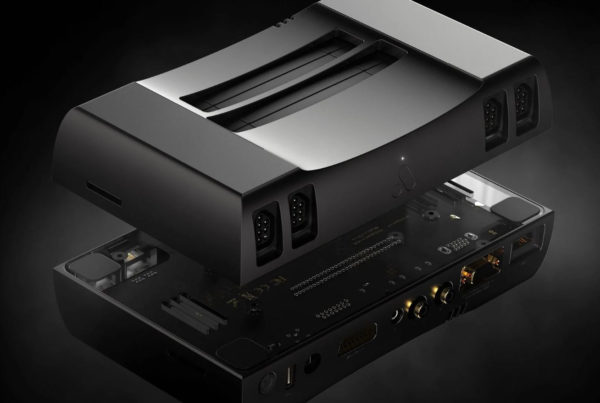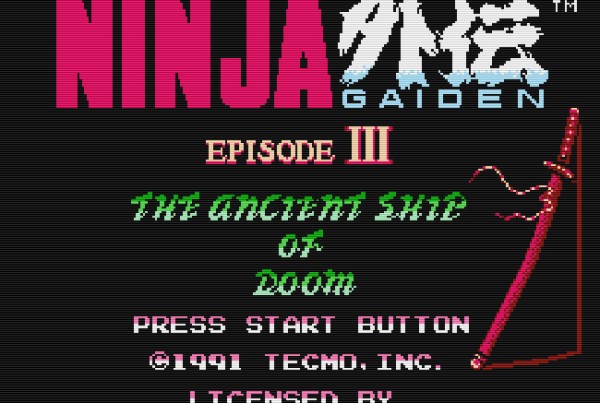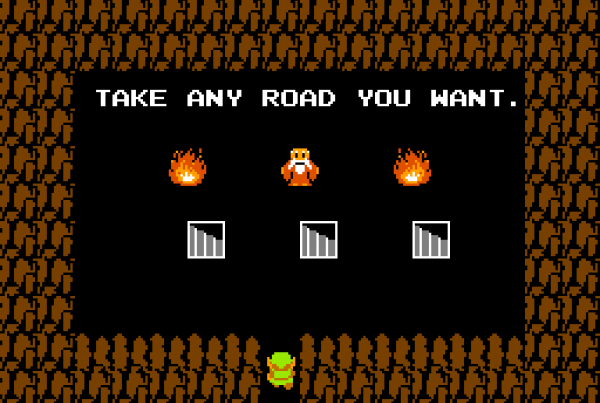Last Updated on October 17, 2019 by James Dziezynski
In the past few years I’ve enjoyed repairing and restoring Super Nintendo (SNES) consoles. The SNES was released in the U.S. in 1991 and represented a major upgrade from the well-known Nintendo Entertainment System (NES). This leap in technology represented the first time that home video games were truly on par with arcade machines. One of the interesting quirks about the venerable console was a “secret” feature built into the visual processor: the SNES is able to output in high-resolution S-Video!

S video (left) and normal composite (right). Notice the crisper, brighter text and less overall blur.
Why is this significant? S-Video (Separate Video) actually has a fascinating history, or at least fascinating relative to the history of most video output cables. Let’s start there.
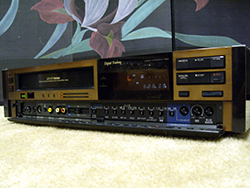
Super VHS. This was the “portable” model.
Who could possibly forget the epic Betamax vs. VHS wars? While they have a distinctly 1980s flavor to them, VCRs actually were introduced in the mid-1970s. Betamax, designed by Sony, was made public in Japan in 1975 while the ultimate champion of this decade-long slugfest, VHS, was introduced by JVC in 1976. A/V nerds know that Betamax was a more capable machine than VHS. It offered superior video and audio when contrasted to VHS, but was more expensive and tightly regulated by Sony. In contrast, VHS was more affordable and marketed more freely, meaning the flood of cheap VHS electronics won the day.
Betamax’s last gasp came in the form of Super BetaMax, a higher resolution format that surpassed the original Betamax and blew away the VHS in terms of sound and visual quality. Even though the threat to VHS dominance was minimal, VHS developers countered with Super VHS (SVHS), enormous VCRs that were just below the quality of Super Betamax but light years better than the original VHS.
One of the key features of the SVHS was a new hi-res video output known as S-Video. Previously, most electronics used standard AV composite cables (introduced in the 1940s!) that have a three-headed wire combo that carried audio though the red and white cables and compressed video into the yellow cable.
S-Video helped boost the SVHS’s video quality by breaking out the previously compressed video signal running on different frequencies on one channel into two distinct channels: one for black and white luminance and one specifically for color resolution. The upshot was a crisp, bright image that reduced blur and improved radiance throughout the color spectrum. As a side note, today’s HDTVs break out the color and light spectrum into even more detailed channels, thus the creation of component and HDMI cables capable of projecting images that are far superior to last century’s video technology.
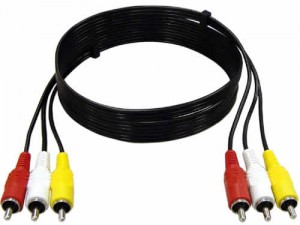
Ye olde timey cables.
S-Video was ushered in by the powerhouse VHS industry and inspired changes in the way TVs were made. Television manufacturers in the late 1980s and early 1990s were quick to adapt. Nearly all TVs were “cathode ray televisions” (CRT), the behemoths we all knew and loved. They worked by projecting electrons onto a screen and weighed like 150 lbs. Kids these days will never know the pain of moving these suckers up three flights of stairs (unless they are retro gamers like myself). S-Video happens to look great on the best CRT TVs — and pretty good on average CRTs as well.
This brings us back to the SNES.
For whatever reason, Nintendo didn’t make much of the fact the SNES could output in the S-Video format. The composite cables that came with the console utilized the well known RGB yellow video line, not S-Video. This made sense as it kept costs down and guaranteed compatibility with most older TVs. Even though most newer TVs from around 1990 on had S-Video jacks, Nintendo didn’t bother to put much effort into marketing the S-Video multi-out cable, which was only available in very limited numbers (mostly through mail order directly from Nintendo). Most people, A/V geeks included, didn’t realize the SNES could output S-Video.
But indeed, the original SNES consoles were capable of S-Video, something Nintendo didn’t even bother to mention in the instruction manual. As a side note, the SNES Jr. (or SNES 2 / Mini SNES) was developed a few years after the release of the SNES as a cheaper, smaller version of the original SNES and did NOT feature S-Video capability, though clever gamers were able to figure out how to modify it to have S-Video support.
It wasn’t until the Internet got the word out in the late 1990s that the true power of the SNES could be improved by the addition of a simple S-Video out cable. Luckily, prices dropped on CRT TVs (basically, you’re doing someone a favor if you take an old one off their hands nowadays) as did the cost of accessories for CRTs. And because Nintendo’s next two consoles, the N64 and the Gamecube, used the same multi-out jack on their consoles, third party companies made affordable S-Video cables compatible with all three systems.
Oddly, Nintendo itself never did jump on the S-Video cable bandwagon — even the Gamecube, released in 2001, didn’t promote S-Video. By that time nearly all TVs made in the past decade had S-Video inputs, so there was really no excuse to at least offer S-Video cables as an optional upgrade.
Which brings us to 2015. I have finally invested in an S-Video cable for my SNES. Since my eyes have spent hundreds of hours staring at SNES games, the improvement is quite dramatic. Text is crisp and clear, pixels are sharp and colors are more bold. The contrast isn’t nearly as dramatic as CRT to HDTV, but it’s still pretty nice to see classic games looking as good as they can on my CRT. If you have hooked up older consoles to HDTVs,you know they tend to look terrible for a number of reasons, mainly because scanlines are eliminated on HDTVs meaning everything looks blocky and pixelated. There are tweaks and tricks to get old consoles to run on new TVs, but the bottom line is that gaming consoles were made for CRTs. When running through S-Video on a high quality CRT, classic games look fantastic.
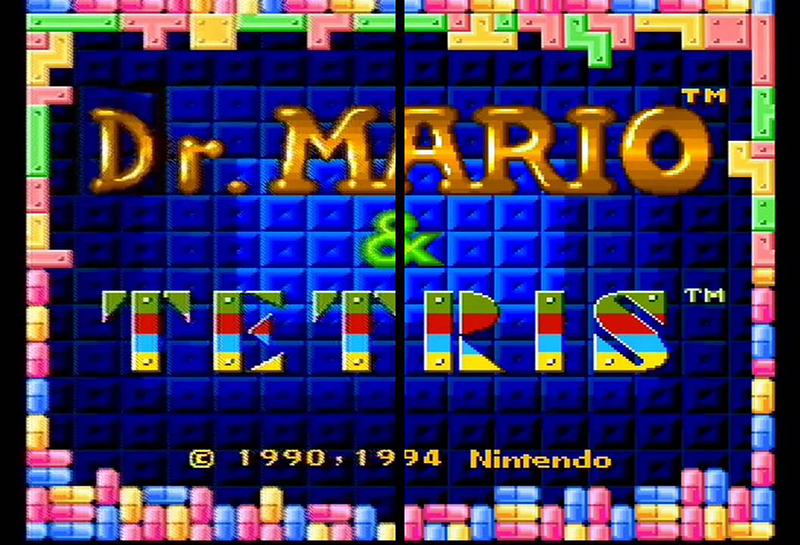
Side-by-side screenshot from Youtube. S-Video on the right, composite on the left.
So all that being said, it’s nice that a console released in 1991 held its secret for so long. Revisiting classic games in true S-Video has brought new life to favorites such as Final Fantasy II, Super Mario World and Super Metroid.
Oh, and if you happen to have one of those old SVHS players sitting around, you can switch over the S-Video cable and dust off your home recorded copies of Perfect Strangers. Why not fall in love with Balki and Cousin Larry all over again? In high resolution!



